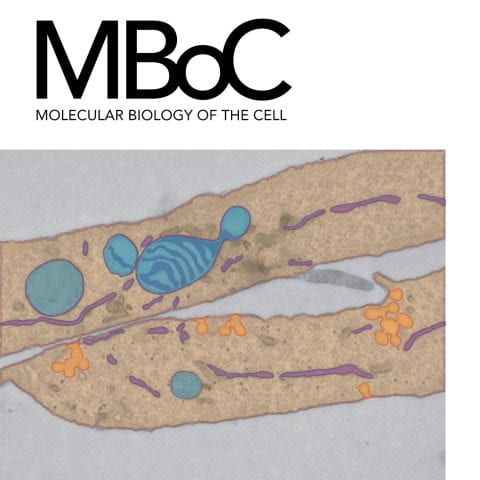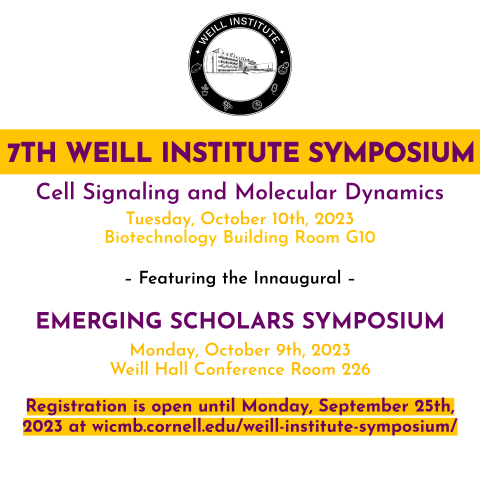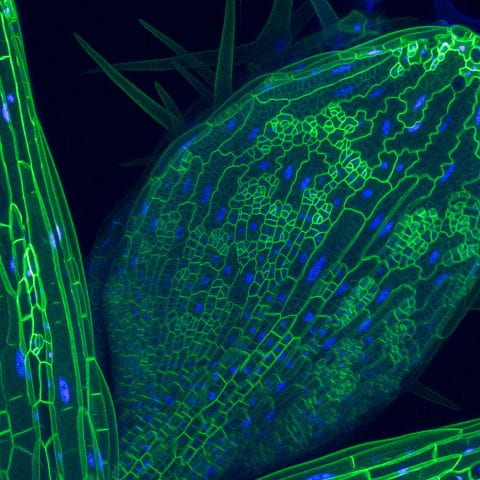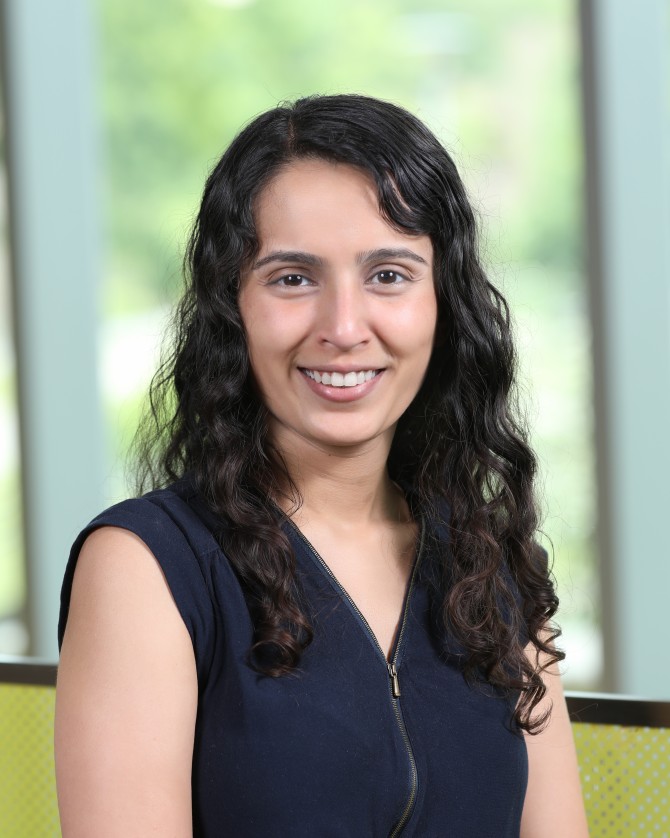News
The location of different actin-based structures is largely regulated by Rho GTPases through specific effectors. We use the apical aspect of epithelial cells as a model system to investigate how RhoA is locally regulated to contribute to two distinct adjacent actin-based...
The location of different actin-based structures is largely regulated by Rho GTPases through specific effectors. We use the apical aspect of epithelial cells as a model system to investigate how RhoA is locally regulated to contribute to two distinct adjacent actin-based structures. Assembly of the non-muscle myosin-2 filaments in the terminal web is dependent on RhoA activity, and assembly of the microvilli also requires active RhoA for phosphorylation and activation of ezrin. We show that the RhoGAP, ARHGAP18, is localized by binding active microvillar ezrin, and this interaction enhances ARHGAP18’s RhoGAP activity. We present a model where ezrin-ARHGAP18 acts as a negative autoregulatory module to locally reduce RhoA activity in microvilli. Consistent with this model, loss of...
Crosstalk between auxin and cytokinin contributes to widespread developmental processes, including root and shoot meristem maintenance, phyllotaxy, and vascular patterning. However, our understanding of crosstalk between these hormones is limited primarily to angiosperms. The moss Physcomitrium patens (formerly Physcomitrella patens) is a powerful system for studying plant hormone function. Auxin and cytokinin play similar roles in regulating moss gametophore (shoot) architecture, to those in flowering plant shoots. However, auxin–cytokinin crosstalk is poorly understood in moss. Here we find that the ratio of auxin to cytokinin is an important determinant of development in P. patens, especially during leaf development and branch stem cell initiation. Addition of high levels of...
Postdoctoral researchers Julie Heffler and Avilash Singh Yadav have been awarded the 2023 Sam and Nancy Fleming Research Fellowships by the Weill Institute for Cell and Molecular Biology at Cornell University. These prestigious three-year fellowships support talented young researchers who are doing cutting-edge research in basic biomedical sciences and are planning careers in biological or medical research. “The Fleming Fellowships provide exceptional young scientists the support and freedom to pursue ambitious projects,” said Marcus Smolka, interim director of the Weill Institute and professor of molecular biology and genetics in the College of Agriculture and Life Sciences. “The 2023 recipients are brilliant researchers. Their highly innovative proposals, one on mammalian hearts...
Arf GTPases are central regulators of the Golgi complex, which serves as the nexus of membrane-trafficking pathways in eukaryotic cells. Arf proteins recruit dozens of effectors to modify membranes, sort cargos, and create and tether transport vesicles, and are therefore essential for orchestrating Golgi trafficking. The regulation of Arf activity is controlled by the action of Arf-GEFs which activate via nucleotide exchange, and Arf-GAPs which inactivate via nucleotide hydrolysis. The localization dynamics of Arf GTPases and their Arf-GAPs during Golgi maturation have not been reported. Here we use the budding yeast model to examine the temporal localization of the Golgi Arf-GAPs. We also determine the mechanisms used by the Arf-GAP Age2 to localize to the Golgi. We find that the...
Arf GTPases are central regulators of the Golgi complex, which serves as the nexus of membrane-trafficking pathways in eukaryotic cells. Arf proteins recruit dozens of effectors to modify membranes, sort cargos, and create and tether transport vesicles, and are therefore essential for orchestrating Golgi trafficking. The regulation of Arf activity is controlled by the action of Arf-GEFs which activate via nucleotide exchange, and Arf-GAPs which inactivate via nucleotide hydrolysis. The localization dynamics of Arf GTPases and their Arf-GAPs during Golgi maturation have not been reported. Here we use the budding yeast model to examine the temporal localization of the Golgi Arf-GAPs. We also determine the mechanisms used by the Arf-GAP Age2 to localize to the Golgi. We find that the...
Weill Institute for Cell and Molecular Biology is pleased to announce our 7th Institute Symposium on Cell Signaling and Molecular Dynamics, on October 10th, 2023. We will be joined by 7 distinguished scientists: Tania Baker, Massachusetts Institute of Technology Thomas Bernhardt, Harvard University James Chen, University of Texas Southwestern Chuan He, The University of Chicago Titia de Lange, The Rockefeller University Seung Yon (Sue) Rhee, Carnegie Institute for Science Sara Wickstrom, Max Planck Institute for Molecular Biomedicine This year, we are also thrilled to present the inaugural Emerging Scholars Symposium on October 9th, 2023. The Weill Institute has selected 8 exceptional senior Ph.D. students in the life sciences, from institutions...
Eight graduate students from across the U.S. to attend inaugural Weill Institute Emerging Scholars Symposium in Oct....
Dr. Adrienne Roeder’s study of polyploid cells in the mustard-like plant Arabidopsis thaliana was featured in the August 2023 issue of Science News. By mutating genes that control polyploidy, she and her team determined that polyploid cells are the key to proper flowering. If the plant sepal had too few polyploid cells, it was stiff and upright and blooming was impeded. Too many such cells caused the sepals to splay and expose the petals prematurely. Roeder and her postdoc Batthula Vijaya Lakshmi Vadde discovered that normal, diploid cells turn into polyploid versions when a protein, ATML1, kickstarts the process, in part by stimulating the production of certain fatty acids. Roeder’s graduate student Frances Clark has found that polyploidy, spurred by the same molecular signals,...
Brittany White-Mathieu, an alumna of the Baskin Lab, was the recipient of a Blavatnik Regional Award for Young Scientists for advancing the field of chemical imaging to further our understanding of lipids, and their role in cellular function and disease, including cancer. She has created a revolutionary method, Lipid Expansion Microscopy, that enables super-resolution imaging of lipids within cells using widely available instrumentation. White-Mathieu’s work enables direct study of these compounds in cellular membranes where critical cell signaling events and nutrient exchange occur. White-Mathieu will begin a new faculty position at the University of New Hampshire in late August...
When a cell divides, faithfully replicating its DNA is essential – the life of the cell is on the line. This year’s recipient of the 2023 Harry and Samuel Mann Outstanding Graduate Student Award, Jumana Badar, is carrying out research to determine how cells ensure DNA is replicated correctly, a question that is central to how healthy cells reproduce and how drugs that make this process more difficult for the cell could be optimized to target cancer cells. , Click to open gallery view Credit: “I am honored and humbled to be chosen as this year’s recipient,” she said. “This award will enable me to seek out opportunities to gain new skills and exercise the ones I already have.” When cells replicate, the DNA strands must separate from one another to form what is called a...
Ari Broad received an Exemplary Service Award for Advanced Career Student at the 2023 Graduate Diversity & Inclusion Awards and Recognition Celebration. This award honors Ari’s demonstrated track record of exemplary service to the Cornell graduate and professional student community, especially in the areas of diversity, inclusion, outreach, and student...
Jawuanna McAllister received the 2023 Social Justice Award at the 2023 Graduate Diversity & Inclusion Awards and Recognition Celebration. This award honors Jawuanna’s demonstrated commitment to identifying and addressing inequities, creating avenues of access, advancing diversity and inclusion, and/or promoting human rights within and beyond...
Saket Bagde (Class of 2018) received 2022 Porter Prize for Research Excellence from the American Society for Cell Biology. This award is given to one graduate student on the basis of “individual scientific excellence, and the creativity and novelty of the research described.” Saket is mentored by Chris...
Saket Bagde (Class of 2018) was presented with the George P. Hess Travel Award for 2023. Saket is mentored by Chris Fromme, who nominated him for this...
The Doerr lab secured funding through the Mario Einaudi Center for International Studies to host a 2-week biotechnology workshop at the Institute for Bioscience and Biotechnology (RIBB) in Kathmandu, Nepal. The main goal is to outfit researchers at RIBB with crucial molecular biology expertise, to enable them to teach similar workshops in the future. We will couple this workshop with actual experiments to map antibiotic resistance genes and discover novel bacterial metabolism in Kathmandu’s main river, the Bagmati. This activity has a high potential to enable students to publish their findings in a peer-reviewed journal. Long-term, the workshop will help build a relationship with the emerging “University of Nepal” (UoN), with the long-term goal of integrating the workshop with...
Will Comstock (Class of 2019) has been awarded an NIH F31 grant – Ruth L. Kirschstein Predoctoral Individual National Research Service Award – through the National Cancer Institute. The purpose of this Kirschstein-NRSA program is to enable promising predoctoral students with potential to develop into a productive, independent research scientists, to obtain mentored research training while conducting dissertation...
Application deadline: April 15th, 2023 Introducing the inaugural Weill Institute Emerging Scholars Symposium on October 9th, 2023 To feature select senior Ph.D. Students spotlighting their research and academic...
With a $3 million National Science Foundation grant, Cornell researchers are creating a new approach to architecture by learning how plants and animals form internal structures....
Have you ever had a nasty infection that just won’t seem to go away? Or a runny nose that keeps coming back? You may have been dealing with a bacterium that is tolerant of, though not yet resistant to, antibiotics. Antibiotic resistance is a huge problem, contributing to nearly 1.27 million deaths worldwide in 2019. But antibiotic tolerance is a covert threat that researchers have only recently begun to explore. Antibiotic tolerance happens when a bacterium manages to survive for a long time after being exposed to an antibiotic. While antibiotic-resistant bacteria flourish even in the presence of an antibiotic, tolerant bacteria often exist in a dormant state, neither growing nor dying but putting up with the antibiotic until they can “reawaken” once the stress is gone....














